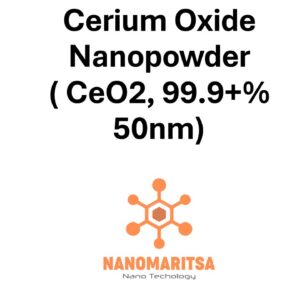Iron oxide nanopowder (Fe₃O₄, 99.9%, 3 nm) is a highly specialized nanomaterial with unique magnetic, chemical, and structural properties. Its ultra-small particle size and high purity make it ideal for advanced applications in medicine, environmental science, energy, and technology.
Composition and Structure
- Fe₃O₄ (Magnetite):
- A mixed-valence iron oxide where iron exists in both +2 and +3 oxidation states, giving rise to its magnetic properties.
- Magnetite is notable for its high magnetization and stability, making it highly versatile in industrial and scientific applications.
- Purity (99.9%):
- The extremely high purity ensures minimal contamination, which is essential for sensitive biomedical and electronic uses.
- Particle Size (3 nm):
- At this ultra-small nanoscale, the material exhibits:
- Enhanced quantum effects.
- High surface area-to-volume ratio, leading to increased reactivity and interaction with surrounding environments.
- Superparamagnetic behavior, which is advantageous for targeted and dynamic applications.
- At this ultra-small nanoscale, the material exhibits:
Properties
- Superparamagnetism:
- Exhibits magnetism only in the presence of an external magnetic field, preventing residual magnetism after the field is removed.
- High Surface Area:
- Enables efficient adsorption, catalytic activity, and interaction with other materials.
- Biocompatibility:
- Fe₃O₄ is considered biocompatible and can be functionalized for safe use in biological systems.
- Electrical Conductivity:
- Exhibits semi-conductive properties, useful in certain energy and electronic applications.
Applications
1. Biomedical Applications:
- Drug Delivery:
- Functionalized Fe₃O₄ nanoparticles can transport drugs directly to targeted sites within the body under the guidance of a magnetic field.
- MRI Contrast Agents:
- Used to enhance imaging quality due to their strong magnetic response.
- Hyperthermia Treatment:
- Generates localized heat under alternating magnetic fields to treat cancer cells selectively.
2. Catalysis:
- Efficient Catalysts:
- Used in organic synthesis and environmental remediation, such as oxidative degradation of pollutants.
- Recyclable Catalyst:
- Magnetic properties allow easy separation and reuse in catalytic systems.
3. Environmental Applications:
- Water Purification:
- Adsorbs contaminants like heavy metals and dyes from water, aiding in environmental cleanup.
- Pollutant Degradation:
- Catalyzes the breakdown of harmful chemicals, contributing to cleaner ecosystems.
4. Energy Applications:
- Battery Development:
- Enhances the performance of anodes in lithium-ion batteries due to its high conductivity and stability.
- Supercapacitors:
- Fe₃O₄ nanoparticles improve charge storage and energy delivery in capacitors.
5. Electronics and Magnetics:
- Data Storage:
- Utilized in magnetic storage media for its superior magnetic properties.
- Sensors:
- Incorporated into magnetic and gas sensors for detecting environmental or biological changes.
Safety and Handling
- Health Considerations:
- Due to their small size, nanoparticles can penetrate biological barriers. Proper safety measures, such as gloves and masks, are recommended during handling.
- Environmental Impact:
- Fe₃O₄ nanoparticles are generally considered less toxic and environmentally friendly, but research is ongoing to assess their long-term impact.
Summary
Iron oxide nanopowder (Fe₃O₄, 99.9%, 3 nm) is a cutting-edge material that combines high purity, nanoscale size, and exceptional magnetic properties. Its ability to exhibit superparamagnetism, combined with high reactivity and biocompatibility, makes it invaluable in medicine, catalysis, energy, and environmental applications. This material represents a cornerstone in the development of advanced nanotechnologies.
| Measurement (gr) | 100 grams, 500 grams, 1000 grams |
|---|






